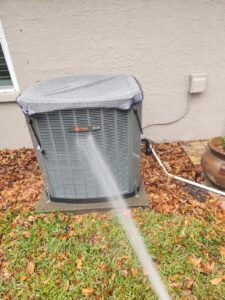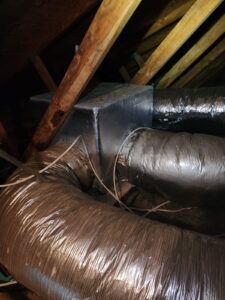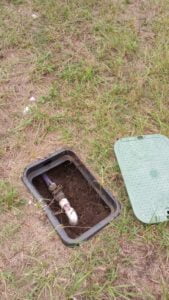5 Powerful Steps to Prepare Your Florida Home for Winter!
Florida is known for its warm, sunny weather, but even the Sunshine State experiences cooler temperatures during the winter months. As a homeowner in Florida, it’s essential to prepare your home for these changes to ensure it remains comfortable, efficient, and well-maintained. Here are some valuable reminders and tips to help you get your Florida home winter-ready.
Understanding Florida’s Winter
Firstly, it’s important to understand what winter in Florida looks like. Unlike northern states, Florida’s winter is relatively mild with occasional cold snaps and temperatures rarely dropping below freezing. However, even these mild changes can impact your home, making winter preparation crucial.
1. Inspect and Maintain Your HVAC System
As a Florida homeowner, one of the most crucial steps you can take to prepare for winter is to inspect and maintain your HVAC system. While Florida winters are milder, the occasional cold snap can make your home uncomfortable if your heating system isn’t up to par. Here’s a detailed guide on how to ensure your HVAC system is ready for the cooler months.
Regular Maintenance
Schedule Professional Inspections: Before the winter season begins, schedule a professional inspection of your HVAC system. A qualified technician can check for any issues that might not be visible or apparent to you. They can ensure that your system is clean, in good repair, and operating efficiently.
Check and Replace Filters: One of the simplest yet most effective maintenance tasks is checking and replacing your HVAC filters. Dirty filters restrict airflow, reduce efficiency, and can lead to poor indoor air quality. During the winter months, when your home is closed up more often, clean filters are even more crucial. Check your filters monthly and replace them as needed.
Heating System Specifics
Furnace Inspection: If your home has a furnace, it’s essential to have it inspected. A technician will check the heat exchanger for cracks, which could lead to dangerous carbon monoxide leaks. They’ll also ensure the burner and flame sensor are clean and working correctly.
Heat Pump Considerations: For homes with heat pumps, winter efficiency is crucial. Heat pumps work by transferring outside air into your home, and when temperatures drop, their efficiency can decrease. A technician can check the refrigerant levels and ensure the system is optimized for cooler temperatures.
Thermostat Settings
Upgrade to a Smart Thermostat: If you haven’t already, consider installing a smart thermostat. These devices can learn your schedule and adjust the temperature accordingly, saving energy and money. You can also control them remotely, which is great for adjusting the temperature before you return home.
Optimal Temperature Settings: The Department of Energy suggests setting your thermostat to 68°F (20°C) during the winter when you’re awake and lowering it while you’re asleep or away from home. This can provide comfort and energy savings.
Ductwork and Ventilation
Duct Inspection: Leaky or poorly insulated ducts can significantly reduce your heating system’s efficiency. Have your ducts inspected for leaks and ensure they are well-insulated, especially in unconditioned spaces like attics or crawl spaces.
Ventilation Check: Proper ventilation is vital for indoor air quality, especially when homes are sealed tight against the cold. Ensure that vents are clean and unblocked by furniture or curtains.
Preparing for the Unexpected
Emergency Contacts: Have a list of emergency contacts for HVAC repairs. Quick access to reliable service can make a big difference if your system breaks down on a cold night.
Know Your System: Familiarize yourself with your HVAC system’s basic operations. Knowing how to check the pilot light, reset the system, or understand error codes can be helpful in a pinch.

2. Seal Drafts and Insulate
In Florida, where the winters are mild, sealing drafts and proper insulation can make a significant difference in your home’s comfort and energy efficiency. Even small leaks can lead to noticeable changes in temperature and increased energy bills. Here’s how you can ensure your home is well-sealed and insulated against the cooler temperatures.
Identifying Drafts
Visual Inspection: Walk around your home and look for visible gaps around windows, doors, and where the walls meet the floors. Pay special attention to corners and where different materials meet.
The Incense Test: On a windy day, hold a lit incense stick near potential draft areas. If the smoke wavers, you’ve likely found a draft.
Professional Energy Audit: For a thorough assessment, consider a professional energy audit. An auditor can use tools like infrared cameras to detect hidden drafts and insulation issues.
Sealing Drafts
Windows and Doors: These are common areas for drafts. Apply weather stripping around movable components and caulk any gaps in the stationary parts of the window or door frames.
Electrical Outlets: Surprisingly, outlets on exterior walls can be sources of drafts. Use foam gasket covers behind the faceplates to seal them.
Chimneys and Flues: Ensure your fireplace flue is tightly closed when not in use. If you never use your fireplace, consider a chimney balloon to block drafts.
Exterior Cracks: Check the exterior of your home for cracks or gaps. Use the appropriate caulk or sealant to fill these areas, preventing both drafts and potential water damage.
Insulating Your Home
Attic Insulation: Heat rises, and without proper insulation, it can escape through your attic. Check the insulation levels and add more if needed. The recommended level for most attics is about R-38 or 10 to 14 inches, depending on the insulation type.
Wall Insulation: Adding insulation to your walls can be more challenging, especially in existing homes, but it’s crucial for maintaining a comfortable temperature. Consider a professional consultation to determine the best approach for your home.
Window Treatments: Heavy drapes or thermal curtains can add an extra layer of insulation around windows, keeping the warmth in and the cold out.
Insulate Pipes: Protect exposed pipes, especially those running through unheated spaces, with foam pipe insulation. This prevents them from freezing on the rare cold nights and helps with hot water efficiency.
Additional Tips
Door Sweeps: Install door sweeps on exterior doors to block drafts from coming in under the door.
Rugs and Carpets: Use rugs on tile or wood floors to add a layer of insulation underfoot.
Ventilation: While sealing your home, ensure you don’t compromise on ventilation. Proper airflow is crucial for preventing mold and maintaining good air quality.
Regular Checks: Make it a habit to check for drafts and insulation issues annually. Materials degrade over time, and new leaks can develop.

3. Roof and Gutter Check
In Florida, winter may not bring heavy snowfall, but it does bring cooler temperatures and sometimes increased rainfall. Your roof and gutters play a crucial role in protecting your home from these elements. Regular checks and maintenance can prevent costly damage and ensure your home remains safe and dry. Here’s how to conduct a thorough roof and gutter check.
Roof Inspection
Visual Inspection: Start with a visual inspection from the ground. Look for missing, damaged, or curled shingles. Check for signs of wear around vents, chimneys, and skylights.
Professional Inspection: If you suspect any damage or it’s been a while since your last inspection, consider hiring a professional. They can identify issues you might miss and provide expert advice on necessary repairs.
Moss and Algae: In Florida’s humid climate, moss and algae can be a problem on roofs. They can cause shingles to degrade faster and lead to leaks. If you notice any growth, address it promptly.
Flashing: Check the flashing (the metal strips that seal and protect the edges of your roof) around chimneys, vents, and where the roof meets a wall. Any cracks or breaks can lead to leaks.
Gutter Maintenance
Clean Gutters: Clogged gutters can cause water to back up and damage your roof, siding, and foundation. Clean your gutters regularly, especially after the fall when they’re likely to be full of leaves.
Downspouts: Ensure downspouts are directing water away from your home’s foundation. Consider adding extenders if necessary.
Leaks and Holes: Check for leaks or holes in your gutters. Small issues can often be fixed with gutter sealant, but larger problems may require sections to be replaced.
Secure Attachments: Make sure gutters are securely attached to your home. Sagging or loose gutters can lead to water damage and are more prone to clogging.
Preventative Measures
Trim Trees: Overhanging branches can damage your roof and gutters, especially during storms. Keep trees trimmed and away from your house.
Regular Checks: Make roof and gutter checks part of your regular home maintenance, especially before and after the winter season.
Gutter Guards: Consider installing gutter guards to prevent leaves and debris from clogging your gutters. They can reduce the need for frequent cleaning.
Insulation and Ventilation: Proper attic insulation and ventilation can prevent heat from escaping through your roof, which can cause damage over time and increase your energy bills.
Dealing with Issues
Prompt Repairs: If you find any issues, address them promptly. Small leaks or damage can quickly turn into costly repairs if left unattended.
Professional Help: For any repairs beyond your comfort level, hire a professional. Roof and gutter work can be dangerous and requires specific skills to ensure it’s done correctly.
Documentation: Keep records of any repairs or maintenance done on your roof and gutters. This information can be valuable for warranties, insurance claims, and future home sales.
4. Plumbing Precautions
In Florida, where winters are generally mild, homeowners may overlook the importance of preparing their plumbing for the cooler months. However, even in warmer climates, a drop in temperature and occasional cold snaps can affect your pipes and water system. Taking the right precautions can prevent inconvenient or costly issues like burst pipes, water heater problems, or inefficient heating systems. Here’s a guide to the essential plumbing precautions every Florida homeowner should consider.
1. Insulate Exposed Pipes
Why It’s Important: In northern parts of Florida, temperatures can occasionally dip below freezing. Exposed pipes, especially those in unheated areas like garages, attics, or outside walls, can freeze and burst, causing significant damage.
How to Do It: Use foam pipe insulation to cover any exposed pipes. It’s inexpensive, easy to install, and provides a good first line of defense against cold temperatures.
2. Service Your Water Heater
Annual Check-Up: Your water heater works harder during colder months. An annual inspection and servicing can ensure it’s running efficiently and catch any potential issues before they become major problems.
Flush the Tank: Over time, sediment can build up in your water heater, reducing its efficiency and lifespan. Flushing the tank annually can prevent this buildup.
Insulation: Consider insulating older water heater tanks with an insulation blanket to improve efficiency and reduce heat loss.
3. Protect Outdoor Faucets and Fixtures
Hose Bibs: Disconnect garden hoses and, if possible, turn off the water supply to outdoor faucets. Drain any remaining water to prevent freezing.
Covers: Use insulated covers on outdoor faucets and hose bibs as an added layer of protection against the cold.
4. Check for Leaks
Detect Early: A small leak can turn into a big problem when temperatures drop. Check under sinks, around toilets, and anywhere you have exposed plumbing for signs of leaks.
Monitor Water Bill: An unexplained increase in your water bill can be a sign of a hidden leak. Investigate any significant changes.
5. Know How to Shut Off Your Water
Locate Main Valve: Make sure you know where your main water shut-off valve is located. In the event of a pipe bursting, quickly turning off the water can prevent extensive damage.
Label It: Consider labeling the shut-off valve for quick identification, especially if you have guests or renters who might not be familiar with your home.
6. Maintain Drains and Sewer Lines
Regular Cleaning: Keep drains clear of hair, grease, and other debris to prevent clogs. Use strainers in sinks and showers to catch hair and other objects.
Professional Inspection: If you have large trees near your sewer lines, consider a professional inspection to ensure roots haven’t infiltrated and damaged the pipes.
7. Prepare for Vacations
Keep Heat On: If you’re leaving for an extended period, don’t turn off your heat. Instead, set it to a lower temperature (around 55°F) to prevent the interior from becoming too cold and risking frozen pipes.
Shut Off Main Valve: For added security, consider shutting off the main water valve and draining the system to prevent any issues while you’re away.
8. Consider a Plumbing Inspection
Professional Assessment: If you’re unsure about your plumbing’s readiness for winter, or if your home is older, consider a professional plumbing inspection. A plumber can assess your system, identify any vulnerabilities, and suggest necessary repairs or upgrades.

5. Landscape and Outdoor Areas in Florida
In Florida, the landscape and outdoor areas of your home are not just an extension of your living space but a reflection of the unique Floridian environment. As the seasons change, even in the mild Florida winters, it’s essential to prepare and maintain these areas to ensure they remain beautiful and functional. Here’s how you can take care of your landscape and outdoor areas in Florida during the cooler months.
1. Understand Florida’s Unique Climate
Florida’s climate is unique, with mild winters compared to much of the United States. However, occasional cold snaps can affect your landscape and outdoor areas. Understanding Florida’s specific conditions is crucial in preparing your outdoor space for winter.
2. Florida-Friendly Plant Care
In Florida, selecting native or Florida-friendly plants is vital for a resilient landscape. These plants are adapted to the Florida climate and require less water and maintenance. As winter approaches, ensure these plants are well-cared for; prune any dead or dying branches and mulch around the base to provide extra warmth and moisture retention.
3. Lawn Maintenance in Florida
Even in Florida, lawns can become stressed during cooler temperatures. Reduce mowing frequency as growth slows down and ensure your lawn is well-fertilized in the fall to maintain its health and resilience. In Florida, it’s also important to adjust your watering schedule as the need decreases during the cooler, and often wetter, winter months.
4. Tree and Shrub Care in Florida
Florida’s trees and shrubs can benefit from winter pruning. However, it’s crucial to understand the specific needs of your Florida flora. Some plants prefer pruning in late winter, just before spring growth begins. Always research or consult a Florida landscaping professional to ensure the best care for your specific plants.
5. Protecting Plants from Florida’s Cold Snaps
While Florida winters are mild, occasional cold snaps can occur. Be prepared to cover sensitive plants with frost cloths or bring potted plants indoors. Keeping an eye on the Florida weather forecast is crucial for responding quickly to any sudden drops in temperature.
6. Irrigation Adjustments in Florida
In Florida, winter typically means less evaporation and slower plant growth, which reduces the need for watering. Adjust your irrigation system accordingly to avoid overwatering, which can lead to root rot and other issues. Florida’s winter is an excellent time to check and repair any irrigation systems in preparation for the drier spring and summer months.
7. Outdoor Living Spaces in Florida
Florida’s mild winters provide an opportunity to enjoy outdoor living spaces year-round. Ensure your patios, decks, and outdoor furniture are clean and protected from the elements. Consider weatherproof covers for furniture and grills to keep them in top condition.
8. Pest Control in Florida
Even in winter, Florida’s climate can harbor pests that affect your landscape. Regularly inspect your plants, trees, and the exterior of your home for signs of pests. Promptly address any infestations to prevent damage to your landscape and outdoor areas.
9. Preparing for Florida’s Winter Winds
Florida’s winter can bring gusty winds. Secure loose items in your yard, such as tools, decorations, and furniture, to prevent damage. Regularly check and trim trees, especially those near your home, to reduce the risk of branches falling during windy conditions.
10. Consult Florida Landscaping Professionals
When in doubt, consult a Florida landscaping professional. They can provide valuable insights specific to your region in Florida, helping you make the best decisions for your landscape and outdoor areas.
5 Powerful Steps to Prepare Your Florida Home for Winter: Expert Advice from The AC Therapist and Plumbing Therapist!
As the cooler months approach in Florida, preparing your home is crucial to ensure comfort, efficiency, and safety. By following these five powerful steps, you’re setting the stage for a worry-free winter. Remember, regular maintenance of your HVAC system with The AC Therapist can significantly enhance your home’s warmth and air quality. Sealing drafts and insulating your space keeps the chill at bay and reduces energy costs. A thorough roof and gutter check prevents water damage and structural issues while taking the right plumbing precautions with Plumbing Therapist safeguards your home from unexpected leaks and bursts. Lastly, don’t underestimate the importance of maintaining your landscape and outdoor areas to protect your property’s integrity and aesthetics.
As you implement these strategies, remember that The AC Therapist and Plumbing Therapist are your allies in home maintenance and repair. With their expertise and services, you can navigate Florida’s winter with confidence, knowing your home is in top condition. So, take these steps today and transform your Florida home into a cozy, safe haven for the winter months ahead. Your well-prepared home will not only provide comfort and security but also peace of mind, allowing you to enjoy all that Florida’s winter has to offer.








